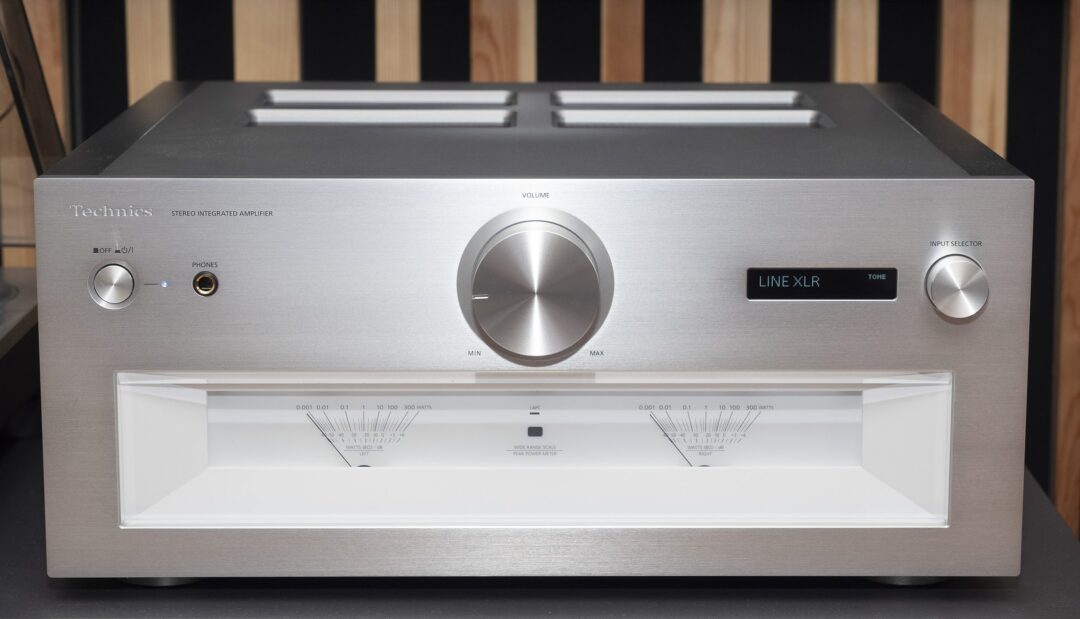All amplifiers are basically the same. A signal enters at one end, amplifies and is output at the other end. If a turntable is connected, it also needs an equalisation, and if the signal is digital, a conversion.
This applies regardless of whether the amplifier is full of glowing valves or transistors, or both for that matter, and this also applies when the designers have invented something new and creative.
No matter what kind of components and circuits the designer puts together, it’s all about a common goal:
The best possible sound within the technical and monetary constraints one has. For budget amplifiers, these are rolled plates that are broken into a chassis, with plastic panels and a simple amplifier circuit with good components and a customized power supply.
In the high-end class, you can use much more expensive and better components, a molded or milled chassis with a power supply that can supply an entire housing complex.
But again, the basic principles are the same no matter what you do between the inputs and outputs of an amplifier.
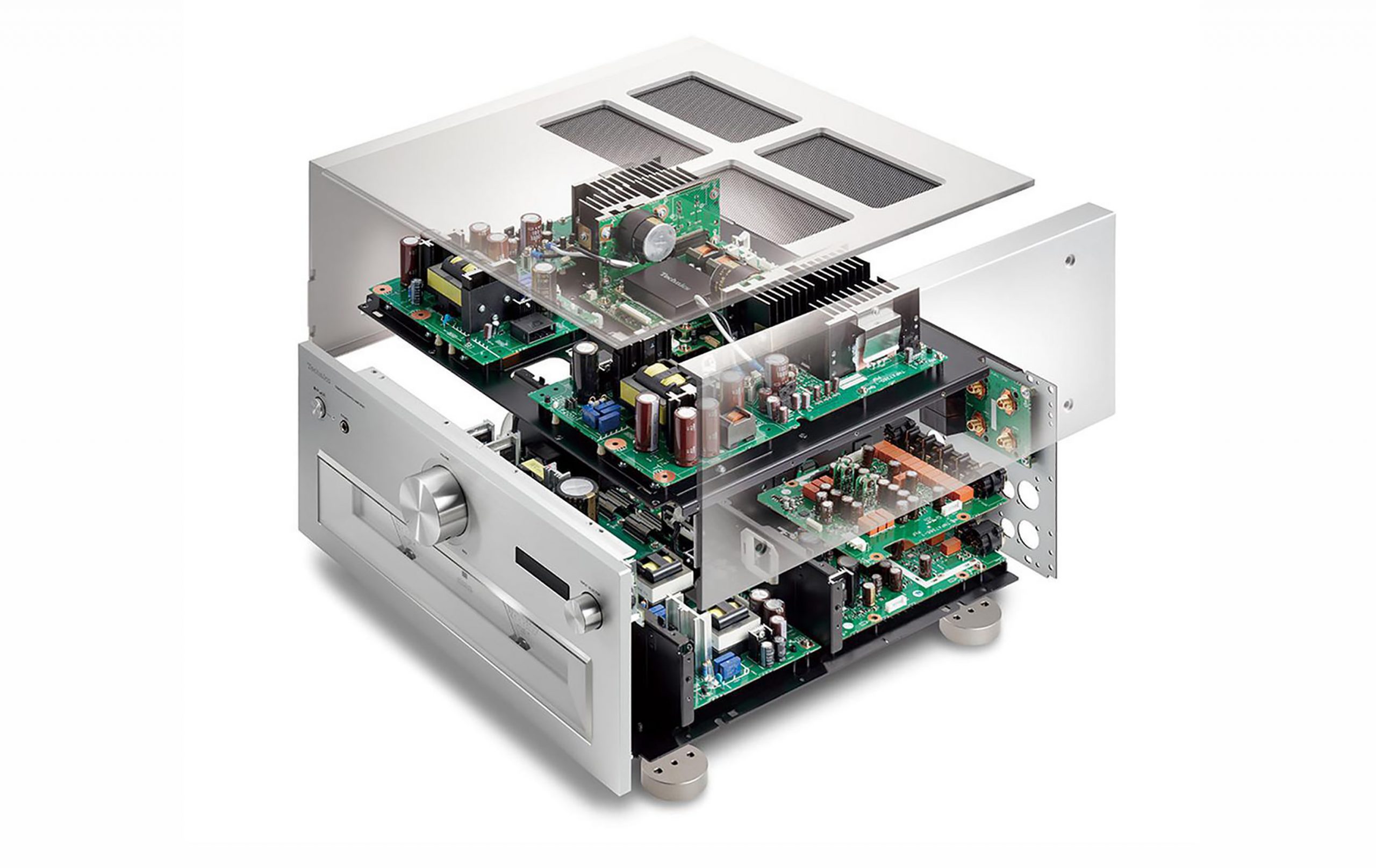
Hybrid with DAC
This also applies to Technics, who for decades has chosen to go their own way. They have not been satisfied with available technology, and have phonetic challenges such as OCL, OTL, Class-A+ and more, in front of their own way of doing it.
They breathed life into that tradition when Technics re-emerged in 2014, after Panasonic had put everything on ice for several years. Then we got some new phonetic pairings like, LAPC and JENO, and now with the new flagship among Technics integrated amplifiers – SU-R1000, they also introduce ADCT and the more understandable Intelligent Phono EQ.
All this is placed between inputs and outputs, in what is a radically much more advanced amplifier, than most we know in this price range. Like most, it has a built-in digital converter – DAC, but also analog inputs, and two pairs of inputs for turntable.
It has no streaming, in any form. Neither wireless nor over ethernet, but the idea is probably to use this with your own network player/streamer, for example Technic’s own – and excellent combined CD and network player, SL-G700.
But let’s first take a brief look at Technics’ many abbreviations. If it seems too technical, I recommend you skip to the next chapter: Intelligent Phono EQ.
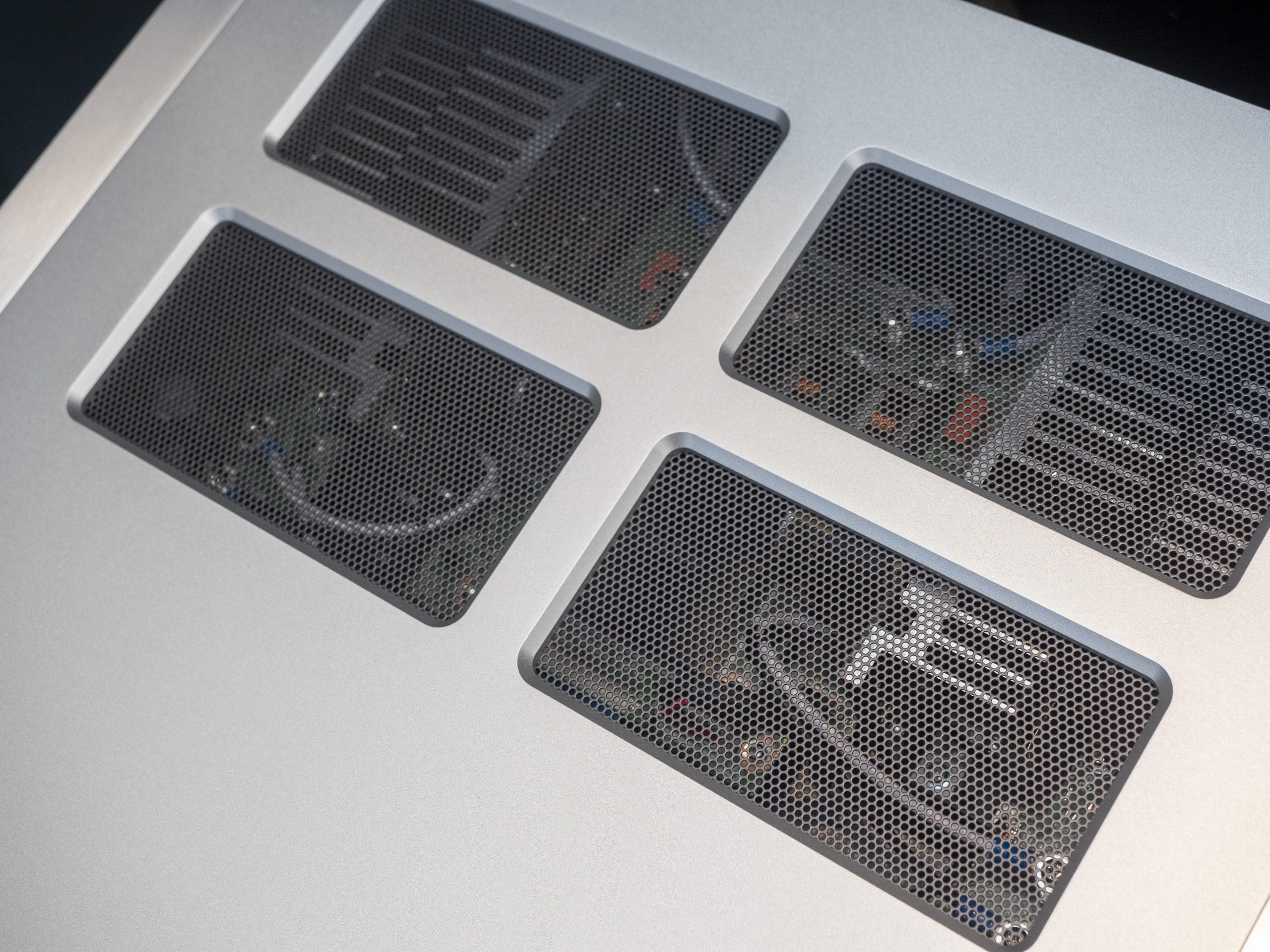
Technology
LAPC means Load Adaptive Phase Calibration, and it can compensate for the uneven impedance and phase angles of speakers by measuring the load on the amplifier outputs. A bit like negative feedback in a transistor amplifier, but here LAPC can compensate for both impedance differences and phase angles.
You start a LAPC process by holding down the button on the remote control until the calibration starts.
Then different tone sequences are sent out in the speakers, while the amplifier’s DSP registers how impedance and phase angles change. After three minutes, the calibration is complete, and you can sit in the easy chair and switch between LAPC on and off, and find out what you prefer.
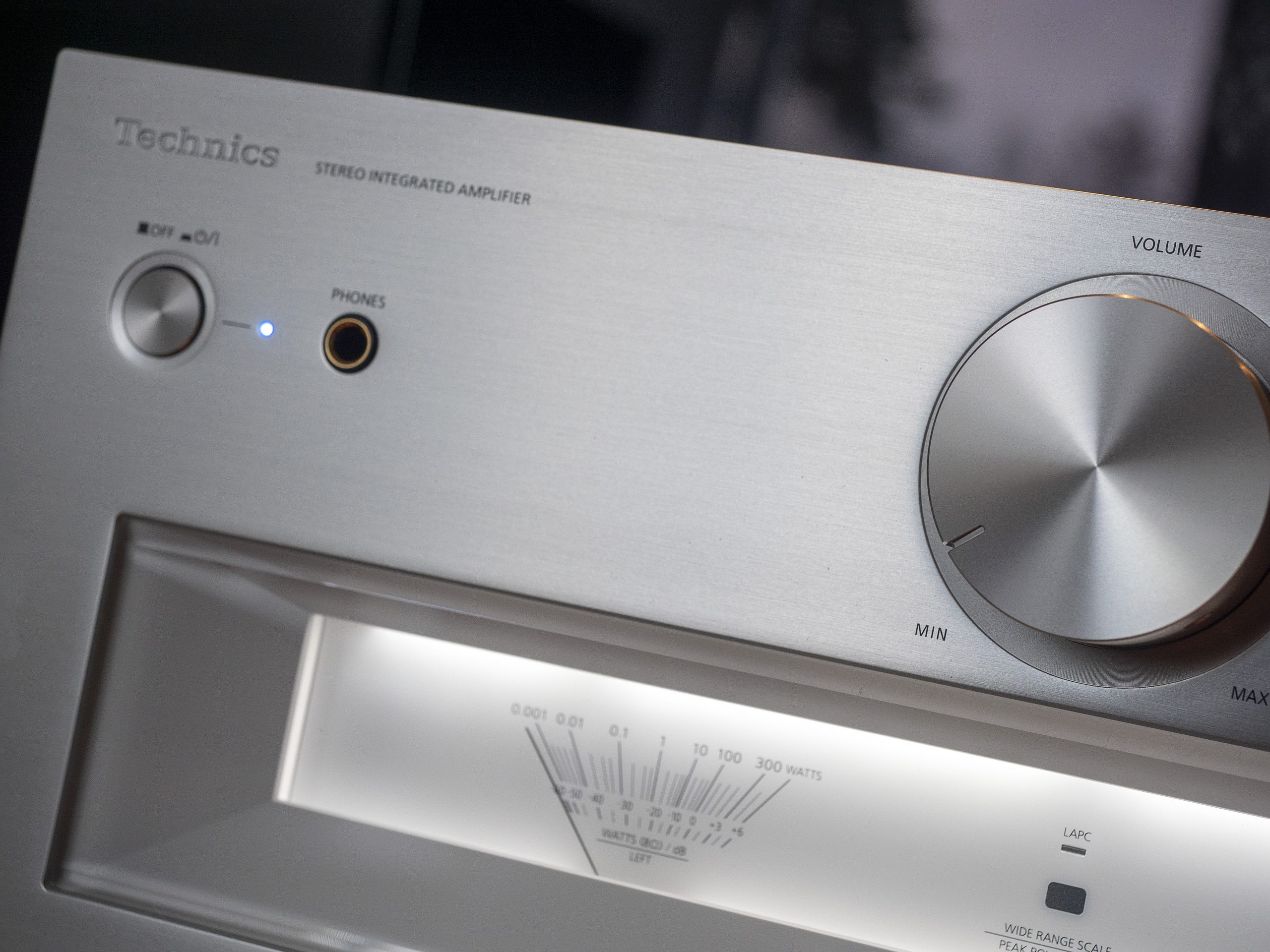
Technics JENO Engine (Jitter Elimination and Noise-shaper Optimization) – is a digital process where noise from all digital audio sources – regardless of sampling frequency – is processed to attenuate jitter. All this goes through a battery-powered clock generator.
The signal is converted to a 768 kHz PWM signal (Pulse Width Modulation) which requantisezes the signal, and then a Noise Shaper converts the signal so that noise is moved further up in frequency, where a multi-stage filter takes over and eliminates the influence of noise.
We’re not done yet. ADCT or Active Distortion Canceling Technology, as it is also called, is another Technics technology that will provide better sound. All signal sources, analog or digital, end up in
The ADCT circuit, which is connected to the JENO process, but here distortion is removed before it reaches the last link in the output stage.
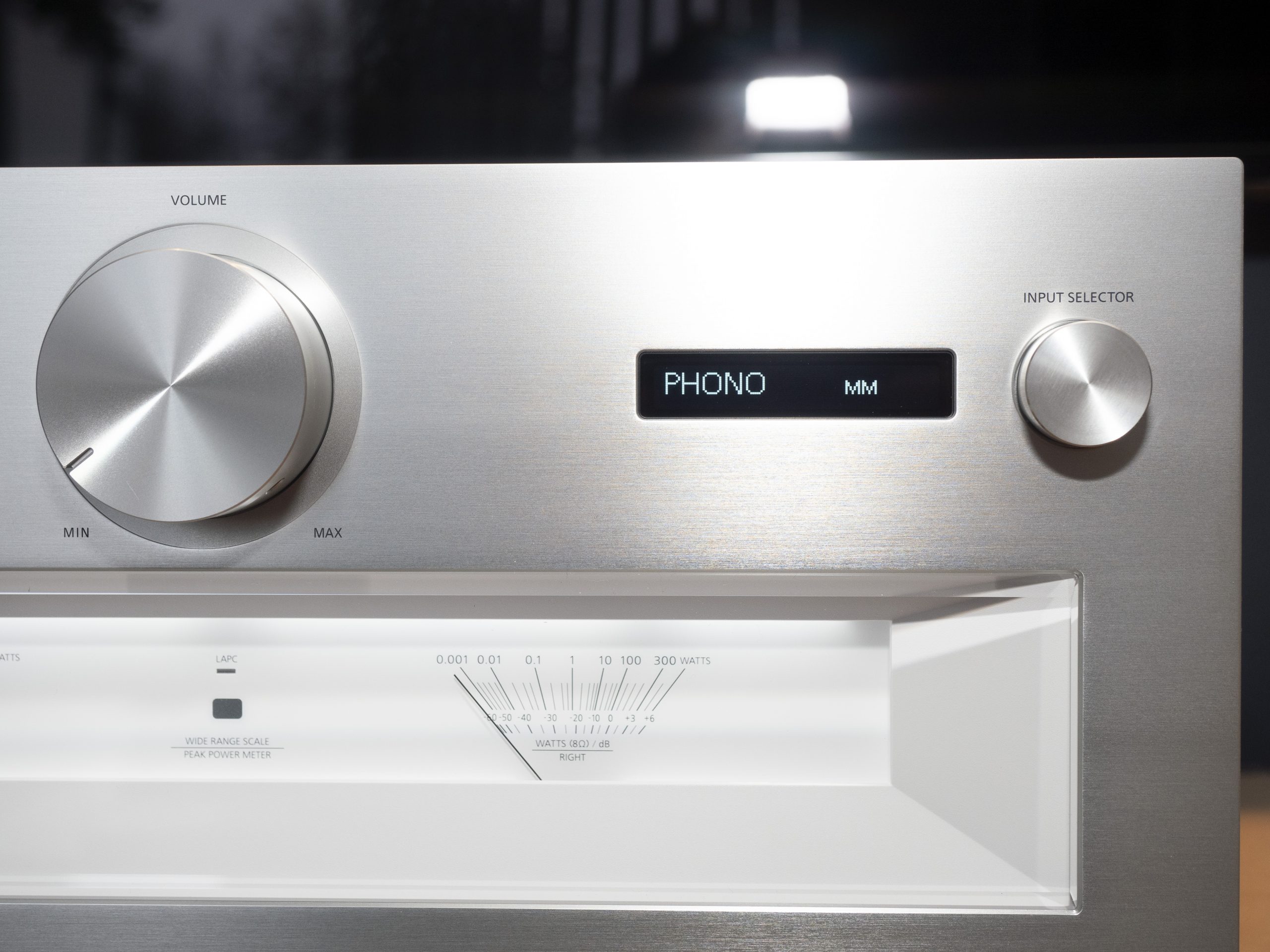
If one thinks that the SU-R1000 is a digital amplifier, then it is a completely correct observation.
The signal processing itself from turntables is processed digitally before it reaches the speakers. Technics uses the same type of GaN field effect transistors that we know from the power amplifier SU-R1, because they believe that they are faster than e.g. MOS-FET, and provides lower distortion.
All of this is powered by a total of four power supplies, one for the turntable input phono stage, one each for the analog and digital circuits, and a bigger one for the output stage. A so-called high-speed switch mode power supply, but here the high-frequency switching has been moved from 100 to 400 kHz to eliminate the noise this type of power supply can generate.
Intelligent Phono EQ
The name is not completely gone at all. You can connect the turntable to either the unbalanced input, or the balanced one (for MC pickup only), and select MM or MC pickup, and gain to the pickup’s output voltage, as well as the preferred curve (RIAA, Colombia, Decca et al.). There are no capacitance or impedance adjustments here. Instead, Technics engineers have chosen a completely different solution.
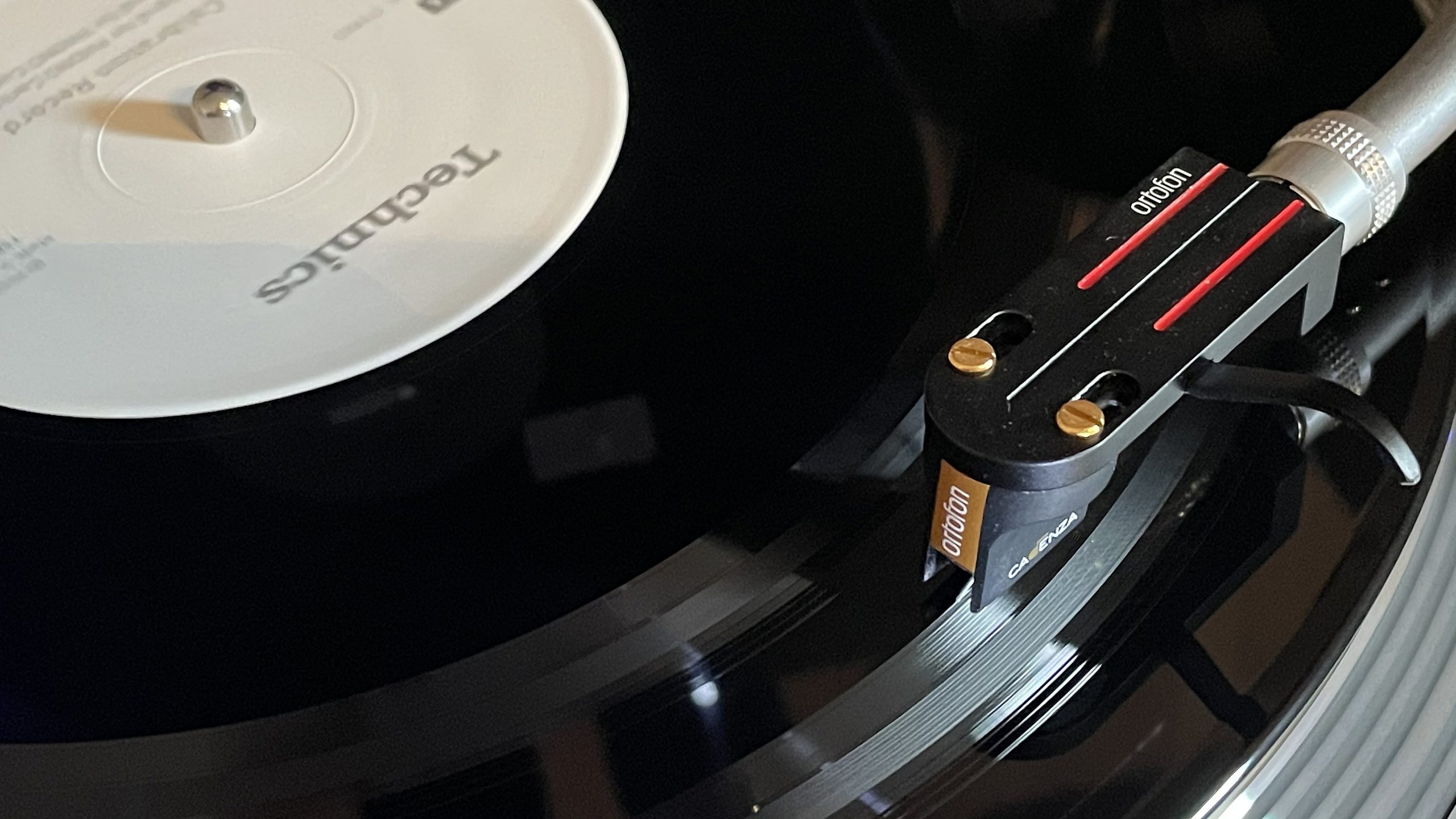
A vinyl record. As with the phono stage analog to digital converter, and a DSP, the phono stage adapts the characteristics of the selected pickup.
This process also does a few other things. As correction of EQ, cancellation of crosstalk between the channels, and adjustment of load impedance by measuring the response from the pickup with a signal on the supplied calibration plate.
Which is a vinyl record, with four equal tracks, where test signals are recorded which the amplifier’s DSP interprets during playback, and then corrects.
If you follow the process step by step, as explained in the enclosed operating instructions, you can adapt the phono step to the characteristics of the pickup, and store up to three profiles in the amplifier. The process is not immune to errors, and one of the pickups I chose refused to measure the amplifier.
The vinyl record must also be clean, completely level, and the pickup must be correctly adjusted up on the turntable.
The entire calibration process takes just over 10 minutes, and when it is finished, the selected calibration is saved and named. It is also possible to turn the Cartridge Optimizer on and off as it is called in the display, so you can listen before and after and decide what you like best.
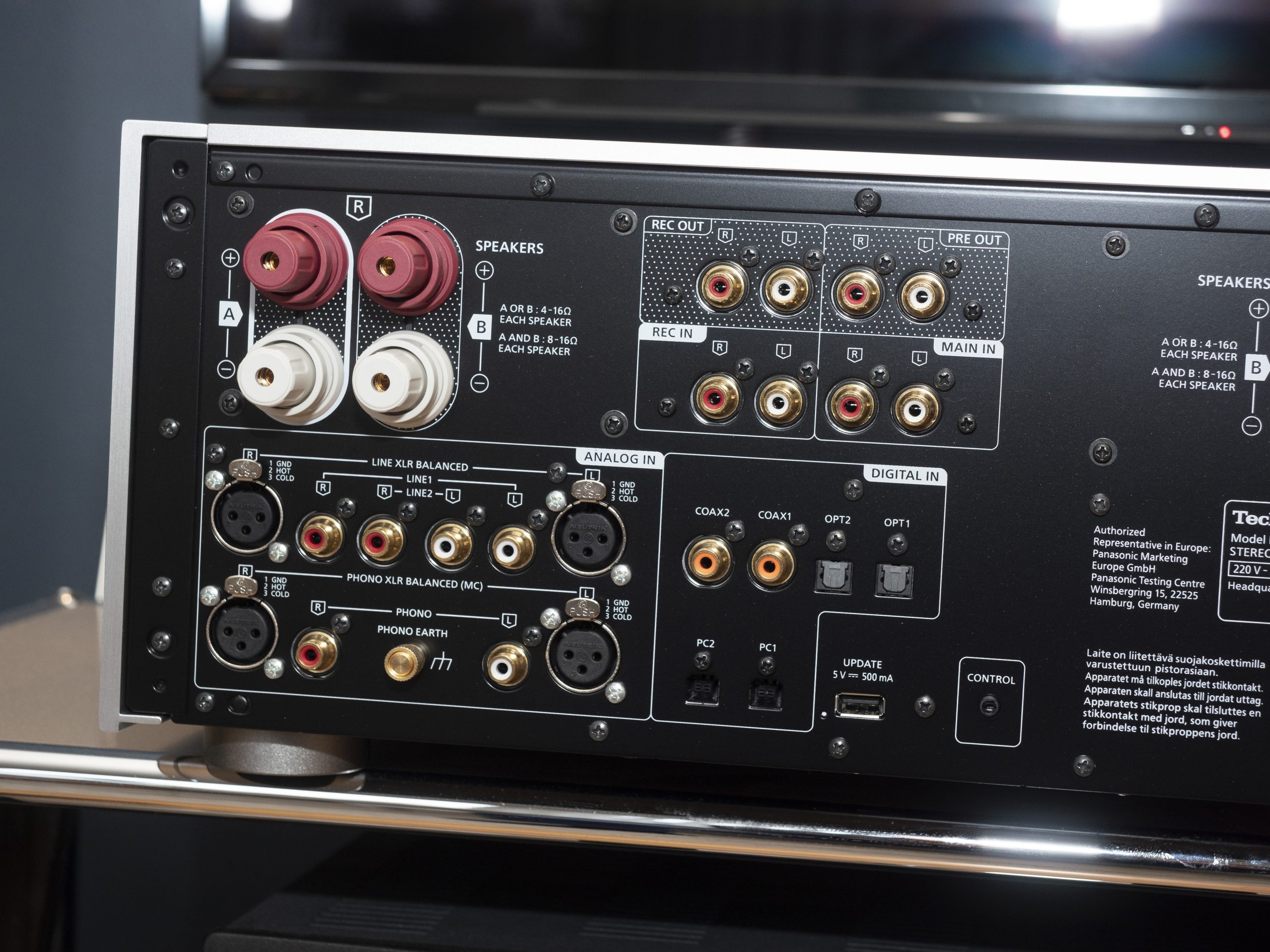
How to use it
The amplifier is very elaborately built with a solid chassis full of circuit boards, cooling fins and power supplies.
The aluminum front plate is 10 mm thick, the top plate 6 mm, and the amp weighs almost 23 kilos, resting on four cast steel feet. The quality goes beyond most of what we have tested in this price range, and the two power meters that we know from, among others, R1, have become a kind of signature for Technics amplifiers.
The included remote controls pretty much everything, from the input selector, menu selections and other settings, and you can control a Technics CD or network player from it. The light in the amplifier’s power meters and display can be dimmed and switched off.
The digital inputs, which consist of two each of optical, coaxial and USB, can also be selected from the remote control, and the built-in digital converter, supports all formats from 16/24/32-bit up to 384 kHz, both PCM and DSD, and it has support for MQA files that we know from the Master directory in Tidal HiFi.
LAPC and MQA can also be switched on and off from the remote control, where you can also adjust bass, midrange and treble. Which can be turned off completely by pressing the Direct button on the remote control.
The amplifier is also connected to another amplifier or subwoofer, it can be connected to a surround receiver and a recorder, perhaps an older Technics cassette or tape recorder because they have gained a newfound interest in tape recording.
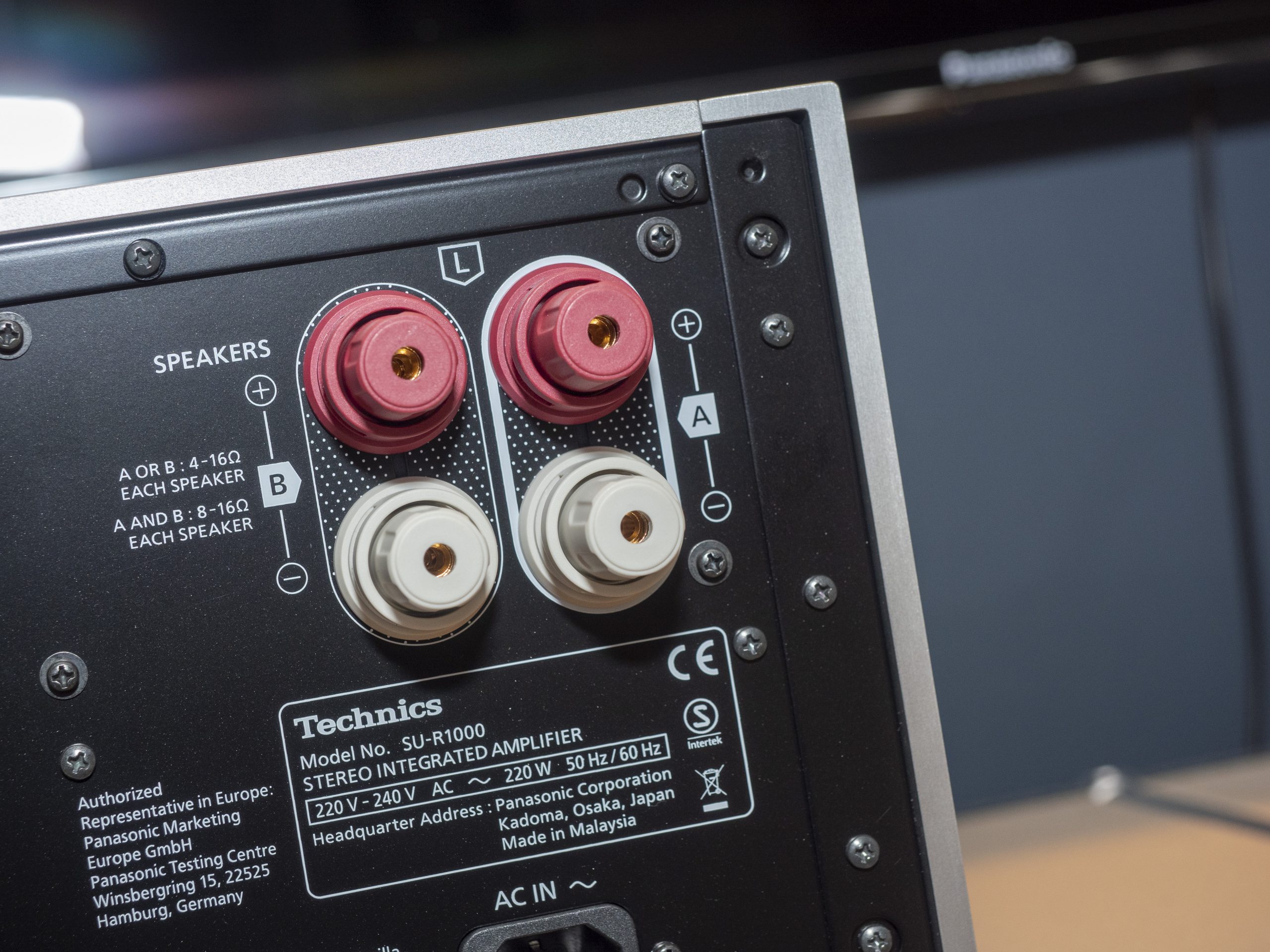
The sound
I started with the Technics amplifier connected to a pair of small Dynaudio Special Forty, and gradually advanced up to the much larger JBL Synthesis 4367, with horns and 15-inch.
At first I experienced the sound as a bit secluded. The bass was there in full force, but it was a little round at the edges. It recovered considerably after a few days. The soundscape opened up, the bass became tighter and better defined, and I started to enjoy myself with the amplifier.
On the small Dynaudio speakers I missed a bit of the grip of a Hegel amplifier in the low range, and on the big 4367, a McIntosh MC1502 (at double the price) sounded both tougher and more engaging. So it was time to open the toolbox of the Technics amplifier.
After a round of LAPC, the sound quality improved noticeably. The amplifier took control of the large 15-inch basses with conviction, and the soundscape opened up considerably. It did not matter which sound source I used, with LAPC enabled the sound was always the best.
This became the default during the test period.
With a McIntosh CD player as the primary audio source in the first period of the test, the amplifier sounded comfortable and lightning fast at the same time. Transients and dynamic fluctuations were immediate and in some cases surprising in the way that I shuddered a little when powerful blows from e.g. a snare drum blew out of the speakers.
The amplifier pulled up a huge soundscape with exceptionally good channel separation and beautiful depth.
With LAPC, it had firm control in the bass, albeit not with the same iron hand as the even tighter Hegel H590, but in return the Technics amplifier reproduced vocals with more warmth and depth.
The rich sound is a bit reminiscent of a McIntosh MA7200, which can also sound beautiful on vocal recordings, but which, like the H590, is also more powerful than the Technics amplifier.
Technics states the power in 8 ohms at 1 kHz, and the 150 w per channel stated, there is little reason to doubt, but an H590 will have better control over the speaker when the amplifier is pressed.
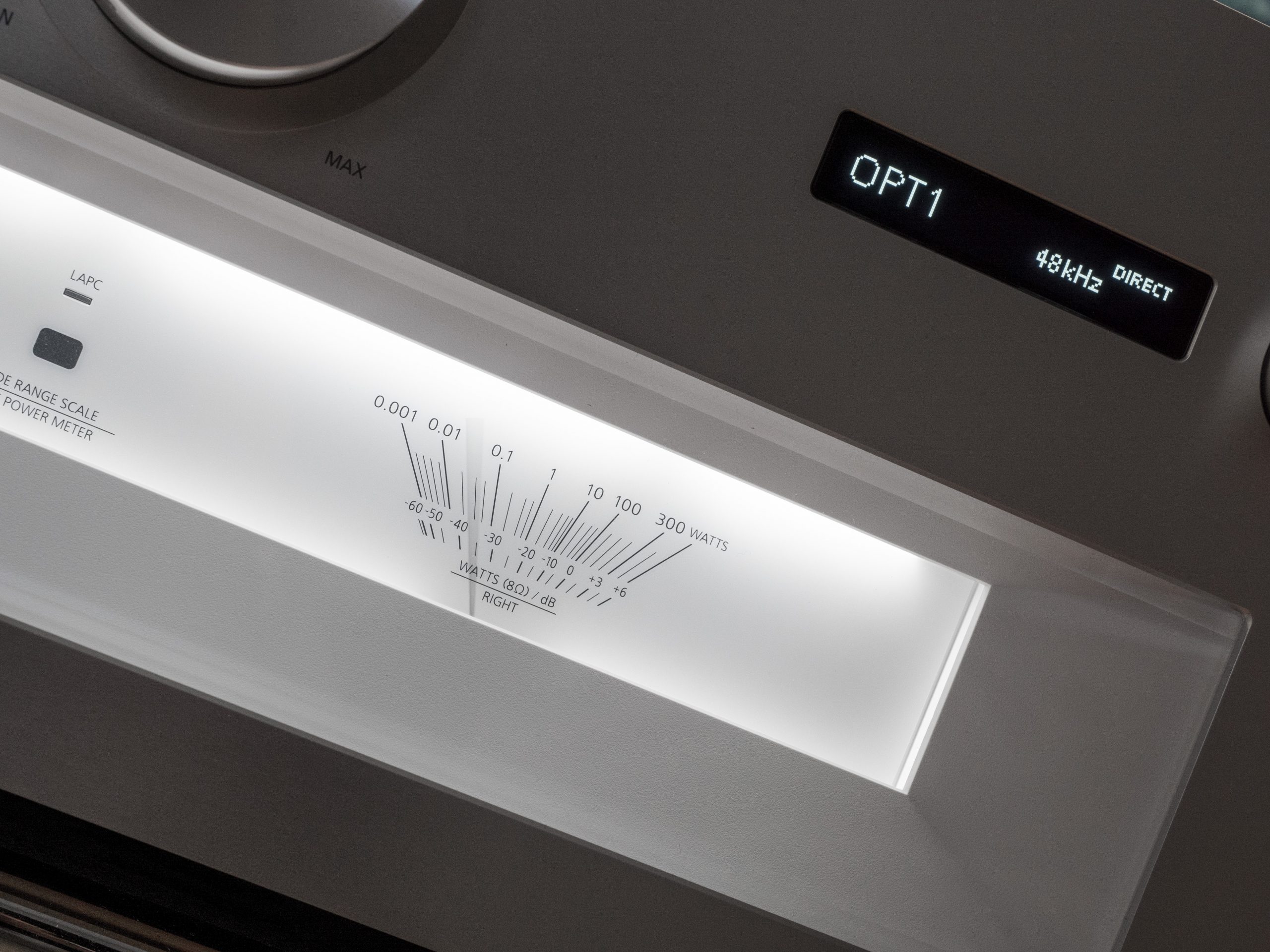
If you push the Technics amplifier, the dynamic contrast is gradually lowered, and you do not get as much power behind the drum beats in the two 15-inch, as with an H590.
But the Hegel amplifier does not have a turntable input. Far less something as advanced as that in the SU-R1000. Personally, I have to admit that I prefer to set the preferences for pickups myself, but the amplifier magically manages to enhance the sound from the turntable with the unusual way of calibrating the phono stage.
Just try for yourself. It is possible to turn the optimization on and off, and although the phono step sounds surprisingly good even without calibrating anything, the sound quality after calibration is far preferable. The piano sound at Keith Jarrett’s Köln Concerto gets more depth with calibration, there is greater dynamic contrast in the soundscape, which grows both in width and depth – and the deep bass connects better with the rest of the soundscape.
The calibration also gives a clear effect on the level of detail, especially in the treble, where before and after it is equivalent to removing a veil in front of the music.
The sound from a MacBook with Tidal Master, connected to USB on the amplifier, was a revelation in transparency and dynamics. With MQA enabled, the level of micro-details also increased. It did not matter if it was Terje Rypdal’s Conspiracy, or Bruno Mars and Anderson Paaks Leave the Door Open, the sound spread throughout the room with a wide range of timbres and created a wonderful live feeling.
Conclusion
The advanced Technics SU-R1000 does the same basic job that all amplifiers do. But it does it with technical features you can hardly find in other amplifiers. For some it may seem frustrating to have to deal with so much advanced technology that you can not be indifferent to, for others they are useful tools on the way to optimizing sound quality. No matter which side you stand on, you can not get away from the fact that the Technics amplifier can solve some problems that you can not solve with other amplifiers.
I would especially like to emphasize the intelligent phono optimization, which despite the fact that it can not be overridden by the user, can raise the sound quality from vinyl records in part significantly. The fact that the amplifier can do most other things as well, apart from streaming, that it looks unusually well built and sounds fabulous at its best (with LAPC) – makes the Technics SU-R1000 a highly interesting integrated amplifier in the high-end class.

We think
Beautiful warm soundscape with enormous depth and dynamics - when all the buttons are pressed. Unique way to calibrate the phono stage. Superb build quality. MQA support. You can not adjust the phono load impedance and capacitance yourself. No network connection, nor among the most powerful in the class.
7499 €
Specifications
- Type: Integrated amplifier
- Power: 2 x 140 w 8 ohm (1 kHz), 2 x 300 w 4 ohm (1 kHz)
- Technology: Technics Full Digital and MOS-FET transistor
- Connections: 2 unbalanced, 2 balanced XLR, pre-out, rec-out, 2 x optical, 2 x coax, 2 x USB
- Turntable input: MM / MC
- Headphone output: Yes.
- DAC: 16/24/32-bit 384 kHz, PCM, DSD
- Network: No.
- Frequency range: -3 dB, 5 Hz – 80 kHz
- Dynamics: Not stated
- THD: Not stated
- Signal/noise: Not specified
- Other: Remote control. Calibration Record.
- Dimensions and weight: 43 x 19.2 x 46 cm / 22.8 kg
- Web: technics.com
